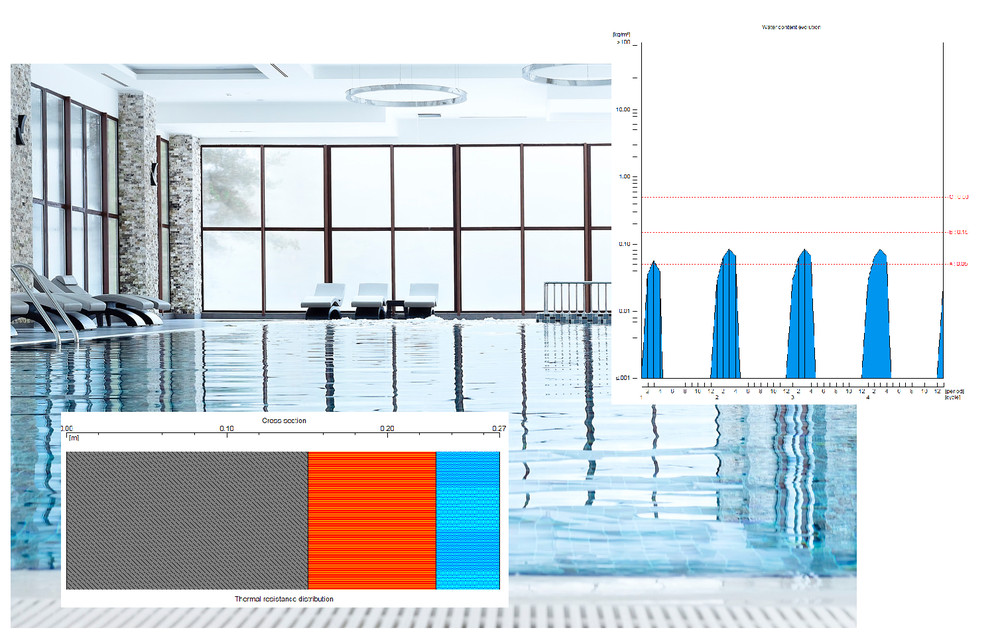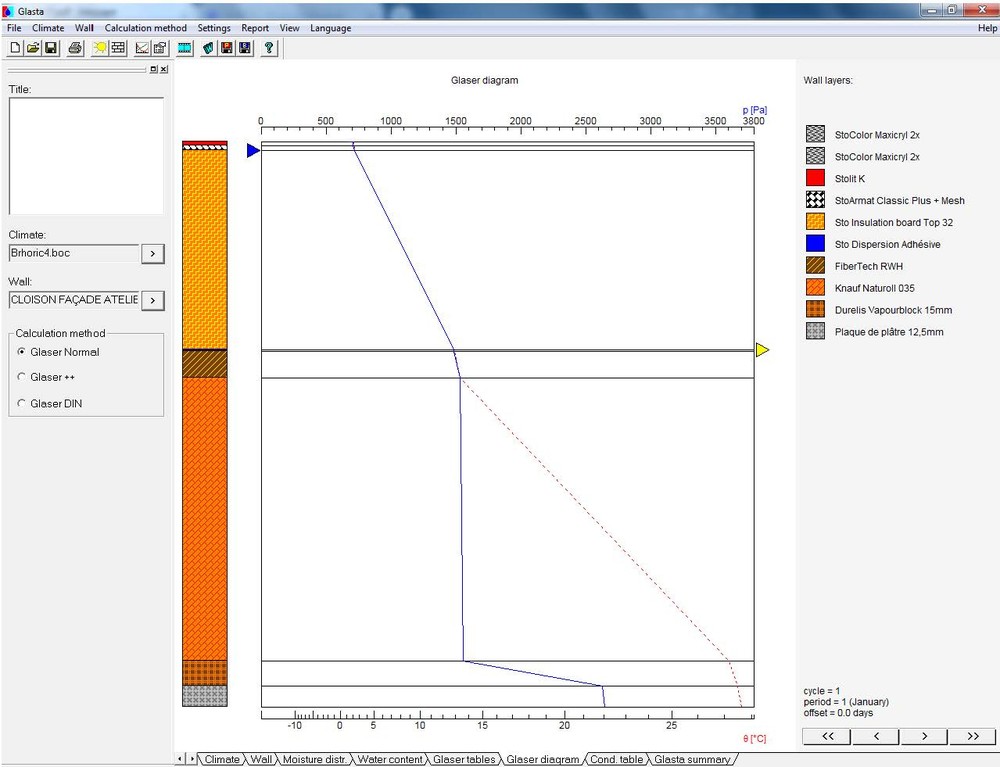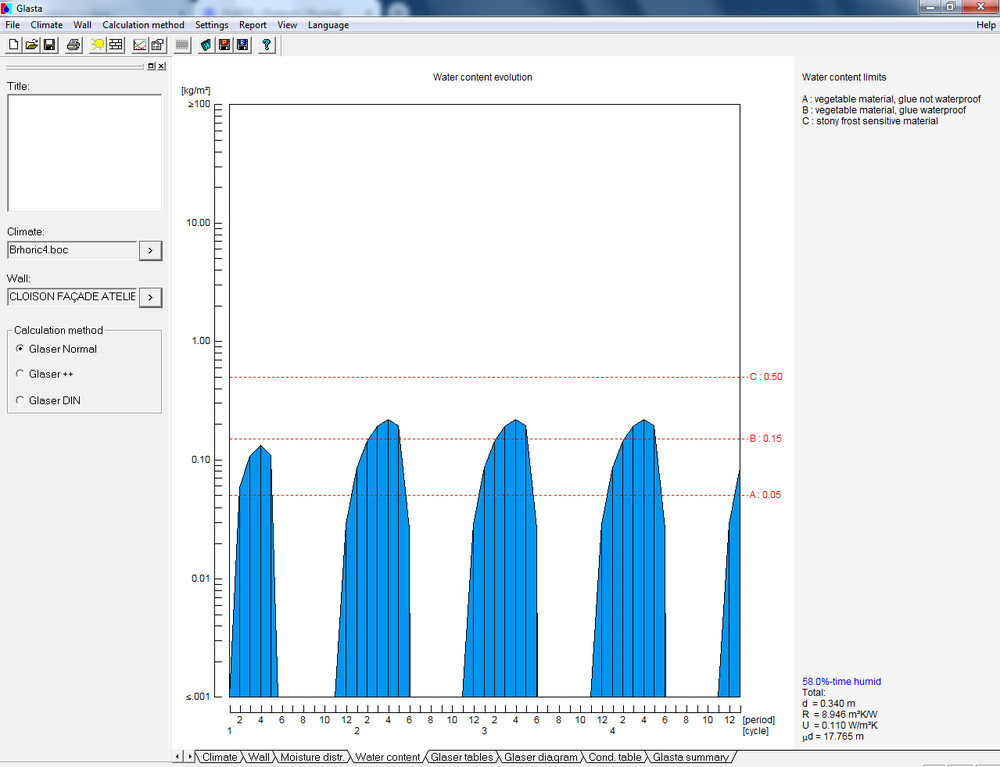
GLASTA
Optimised reporting tool for condensation/drying within multi-layered constructions via simulation of heat and vapour according to EN 13788 and DIN 4108.

Features
- Multi-layered wall (1D)
- Climates at both sides of wall
- GLASTA calculates interstitial condensation and drying due to water vapour diffusion
- Software operational in English, French, German, Italian and Dutch

Wall and climate conditions
- Per layer: thickness, thermal conductivity or thermal resistance, water vapour resistance factor or water vapour diffusion equivalent thickness, humidification possibility, critical, maximal and initial water contents
- Monthly (or other periodically) mean values of temperature and vapour pressure or relative humidity
- Climate database for European locations

Calculation methods
- Glaser method (EN ISO 13788): condensation occurs where the calculated vapour pressure is above the saturation vapour pressure
- The amount of condensation or drying in the layer interfaces is updated after each climate interval
- DIN Glaser method: corresponds to DIN 4108
- Extended Glaser method: considers capillary water movements due to condensation and drying

Report
- Per climate period: Glaser table and diagram
- Water distribution diagram and water contents evolution
- Automatic report generator
- Animations of successive Glaser diagrams (AVI files)
what's new in version 5?
- Built-in report generator in Word format
- Extensive wall and climate editor functions
- Real time calculation provides immediate results
- Software licence options (stand-alone/network floating/cloud-based floating)

